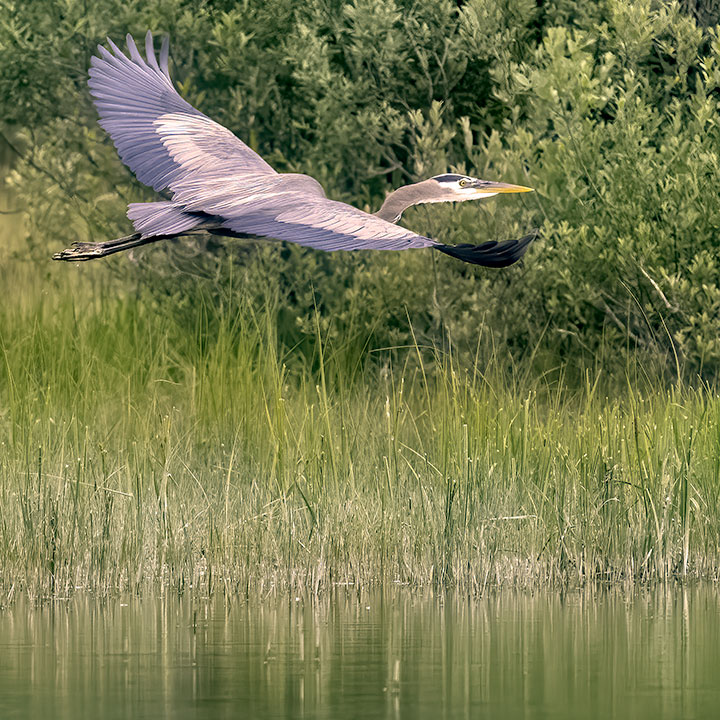Following my posting, an eagle juvenile flew by, I watched a Great Blue Heron do likewise.
Mind you, the heron did not look my way, as the Bald Eagle had, but just went about its business of monitoring the wetlands.
A Great Blue Heron flies low over the wetlands.


That’s so beautiful Alistair!
I have a request than can go unrequited until the proper occasion presents itself: a fly went by.
Doug, chuckle that’s easy. Here are a couple of links that show some flying flies. These are hover flies, but a few different species: pollen covered; small fliers.
So elegant. Thanks.
The unexpected contrast between the slender, vertical reeds and the slender horizontal heron, got me thinking about allometry. It is so common to see narrow plants, yet so rare to see such extreme narrowness in the animal world. Must have something to do with how they meet their energy needs.
Wonderful blog. Thanks so much for your unique and enriching perspective on the natural world.
Sybille, of course, whether the slenderness of the heron is horizontal or vertical depends on its stance. For example, see the posting, heron anisocoria. However, as the study of allometry notes, as size increases, mass increases faster than cross-sectional area. The result is that weight outpaces strength, requiring support and movement to produce thicker stalks, bones and muscles.
And thank you for your assessment of my efforts. I suspect that what separates my blog from the Instagram crowd, is my occasional commentary.
In that instance, posed against a bushy tree. It’s the fusion of artistry with science that is compelling.